Alkhemist
Well-Known Member
WELCOME!
at this stage i am starting with this, a prelude to my next and current grow..
this will be V2 of this recirculating top feed hydroponic system proper, i have moved from a shed grow space to a 3m(wide) x 1.5m(deep) x 2m(high) tent.
i'll be catering for the needs of:
4x HGK(Holy Grail Kush): DNA genetics
1x Somango x Critical: ??
1x Black Domina x Cheese: ??
1x White widow x OG Kush: ??
1x Big Bud x White widow: x-line- female seeds
2x cinderella 99 hybrids: x-line- female seeds
thats the plan anyway ;] whether they will all prove to be fems only time will tell, i have others on standby if need be But this is what im going with at present- all except the HGK & cindies are freebies so i wanted to use them up first. i will go with Critical mass, blue dream and THC bomb in my next grow. i'll be aiming to take these little ladies to their limit in terms of yield and quality.. but as always- we'll see ;]
the equipment is much the same as my last grow.. magnetic 600W ballasts x3- 600W HPS bulbs, prima klima Cent fan and carbon filter.. same hydro setup as my last grow.. going with flairform nutrients again.. the only thing that is different really is the tent, the configuration of my hydro pots(not much different just inline as opposed to staggered due to space restrictions) and introducing a growth promotant using gibberellic acid and triancontanol- introducing both in a formulation to the reservoir every res change(once per week), i will also be experimenting with an additional growth hormone via foliar spray to only 2 of the 4 HGK plants- 2 weeks before flip to flower and 4 weeks before harvest, i will not name this hormone at this stage but will name it at the end if i see results- sorry to be so secretive! LOL
i'll be going with a GLR light cycle this time, LST as i did in my last grow and decline light times by 30 mins each week of flower.
pics to date:
tent-
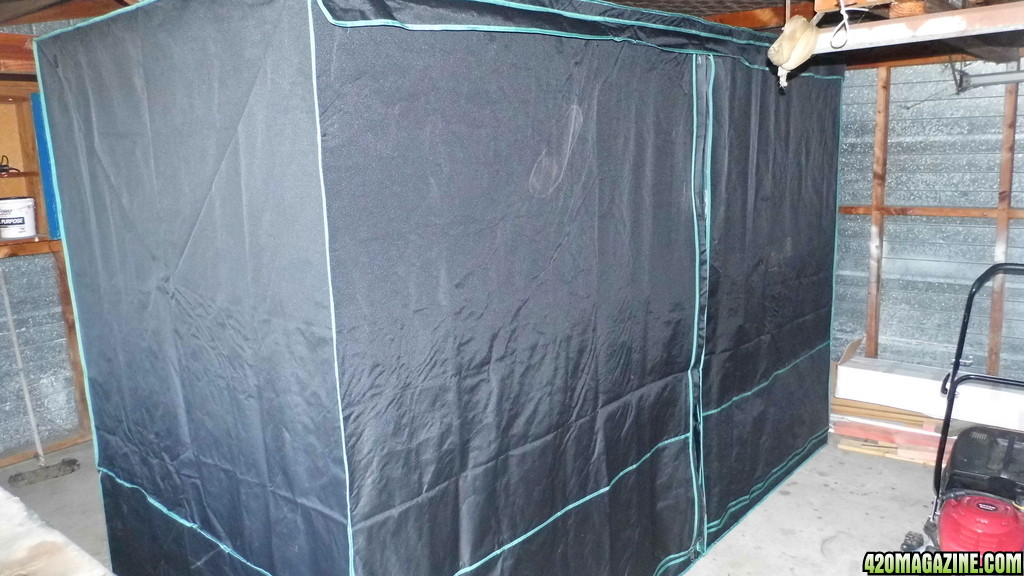
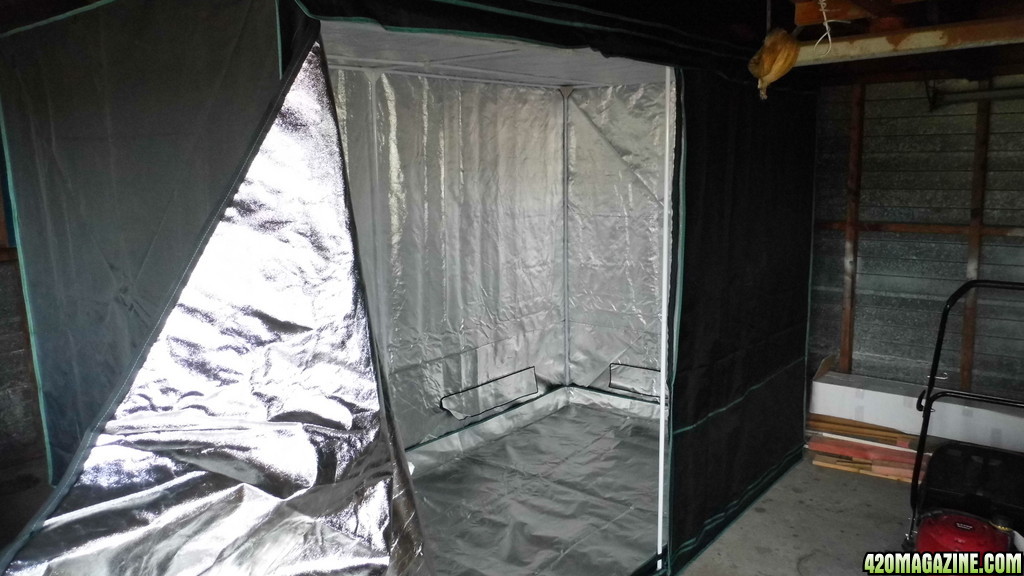
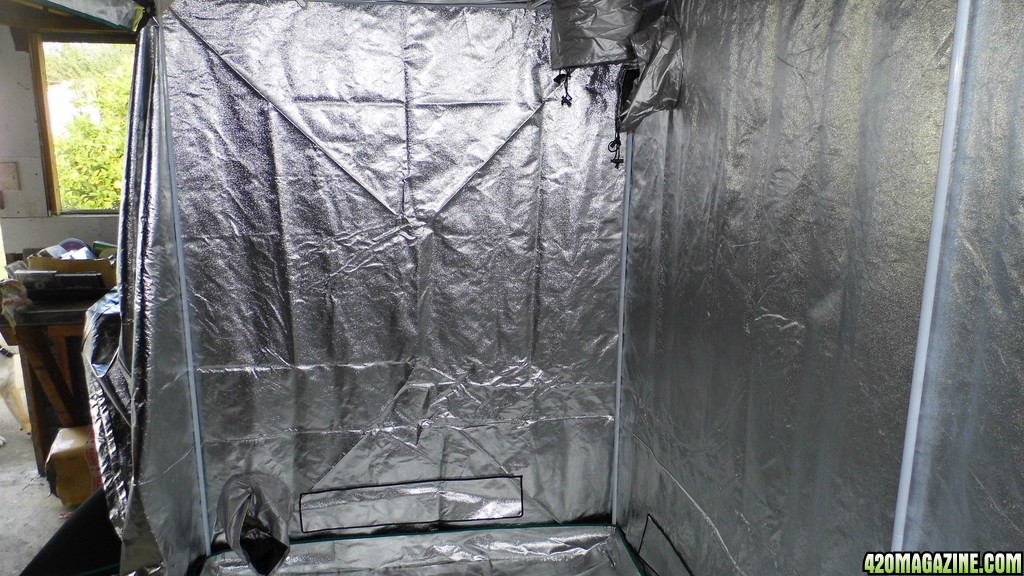
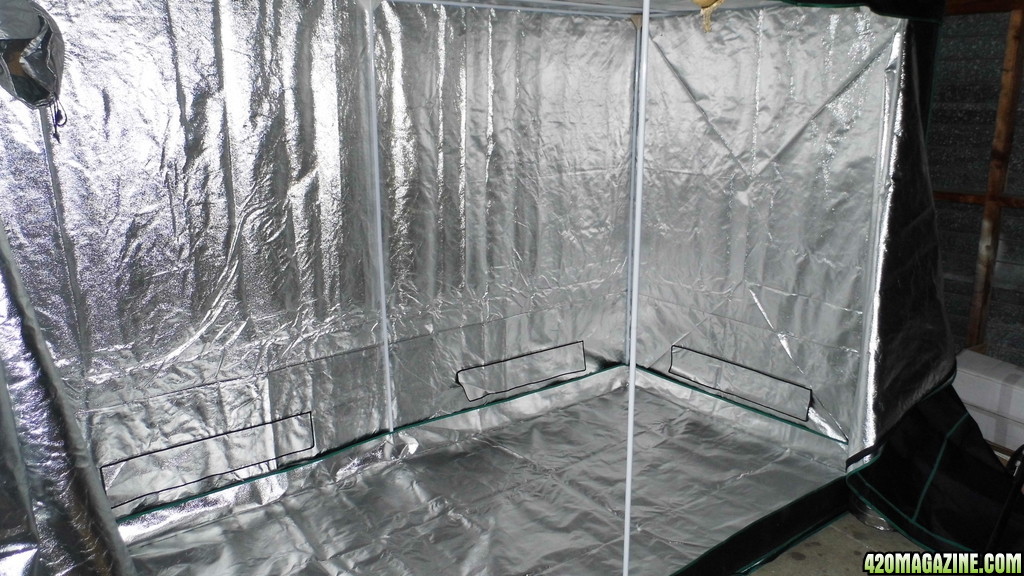
with pots set up-
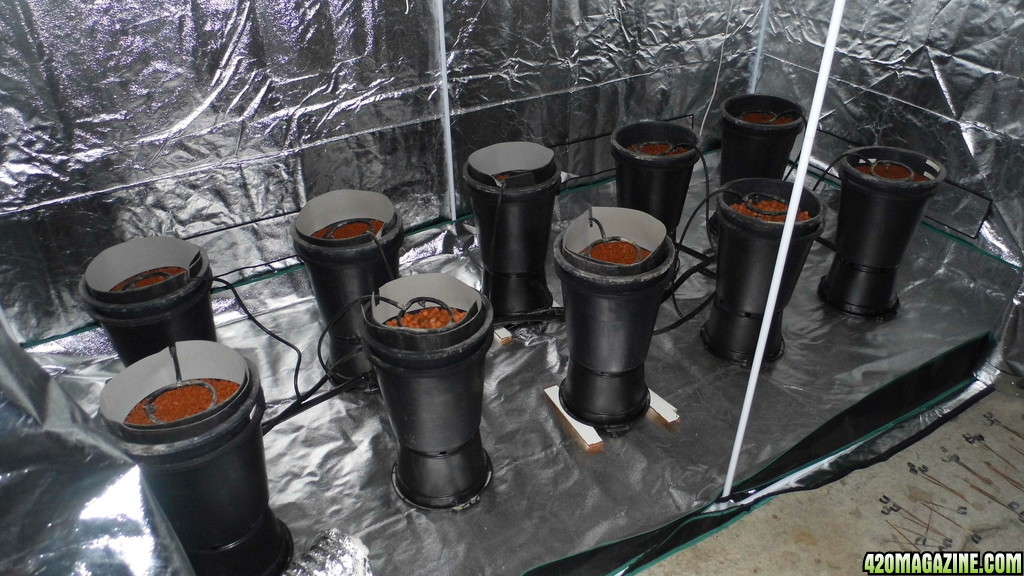
and with lights-
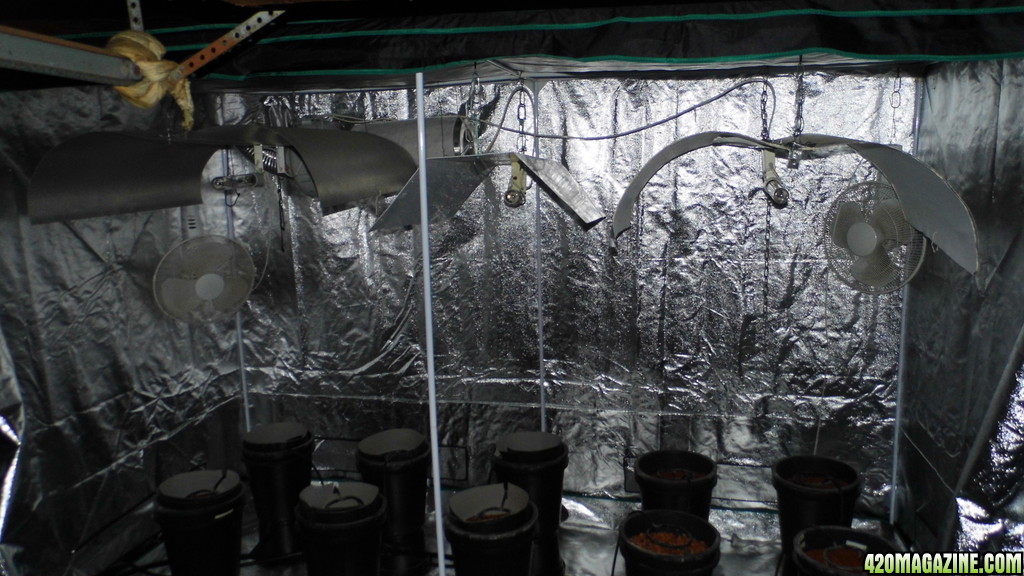
fan and filter-
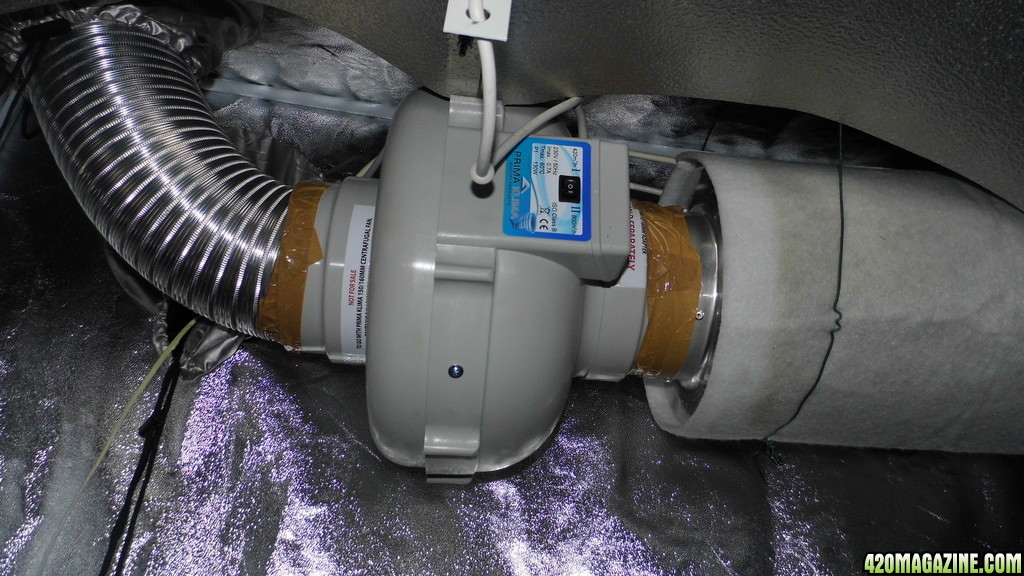
intake vent for intake fan, feedline from res and return line back to res-
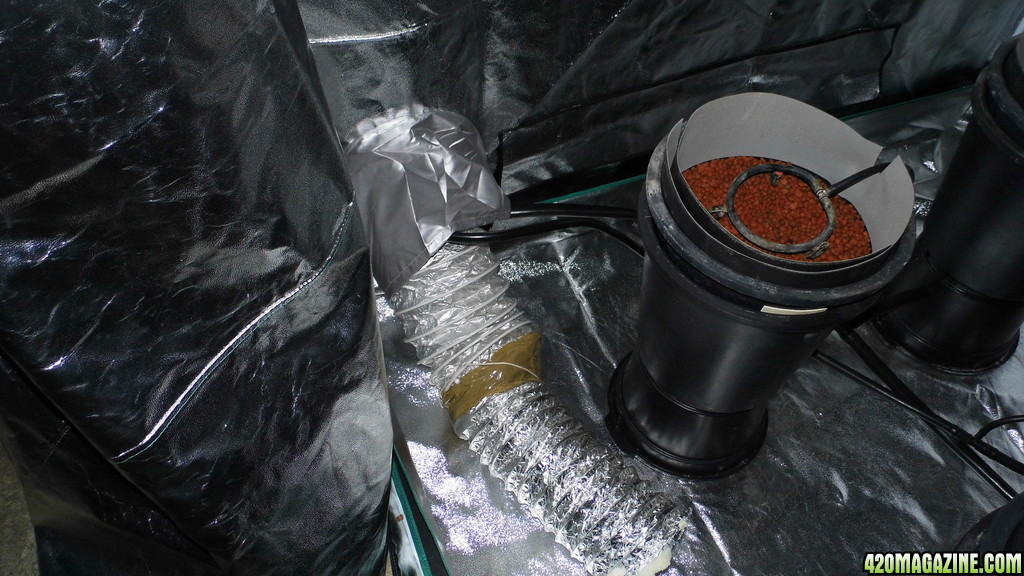
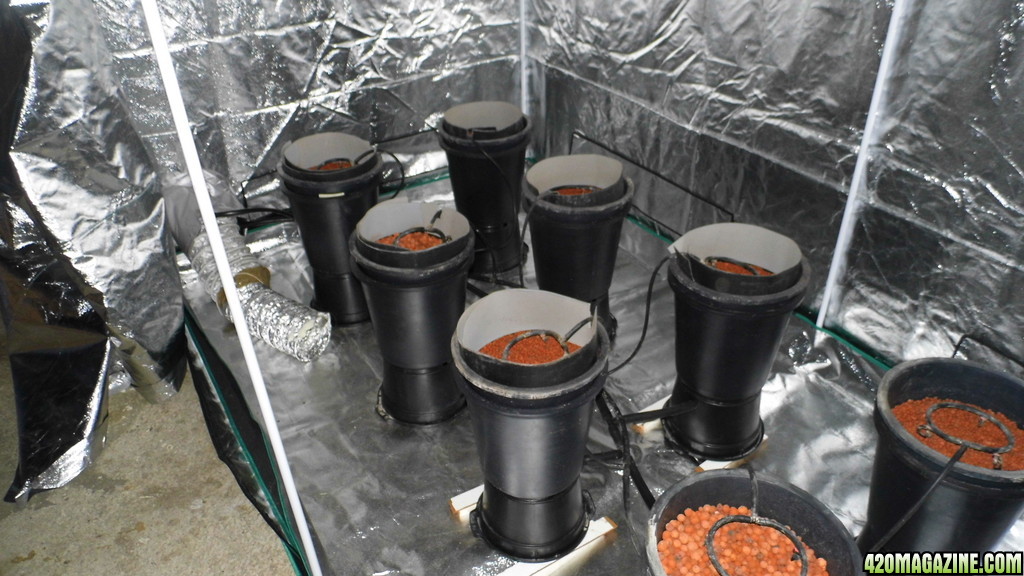
nutes etc-
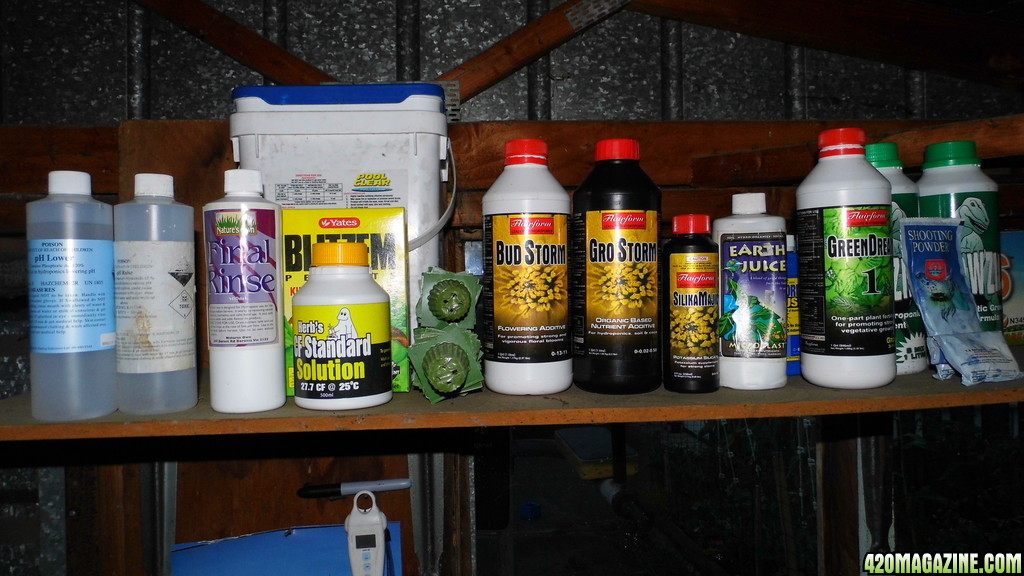
res linked up-
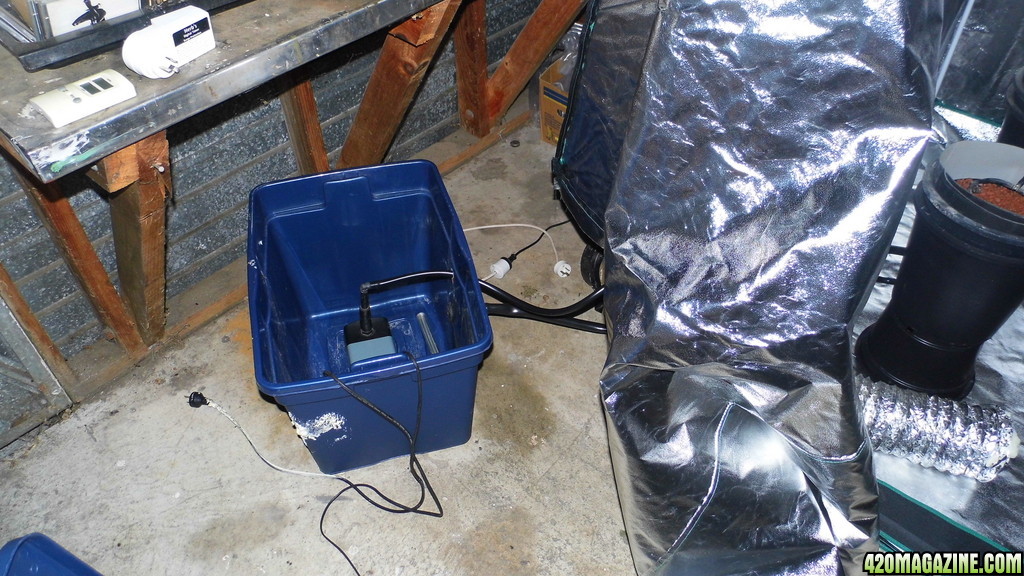
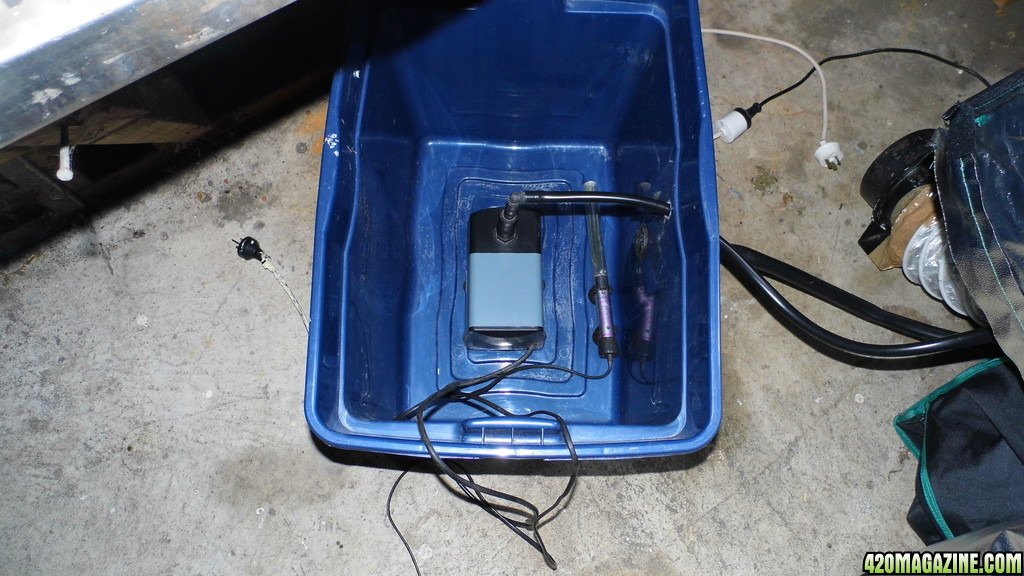
ballasts set up-
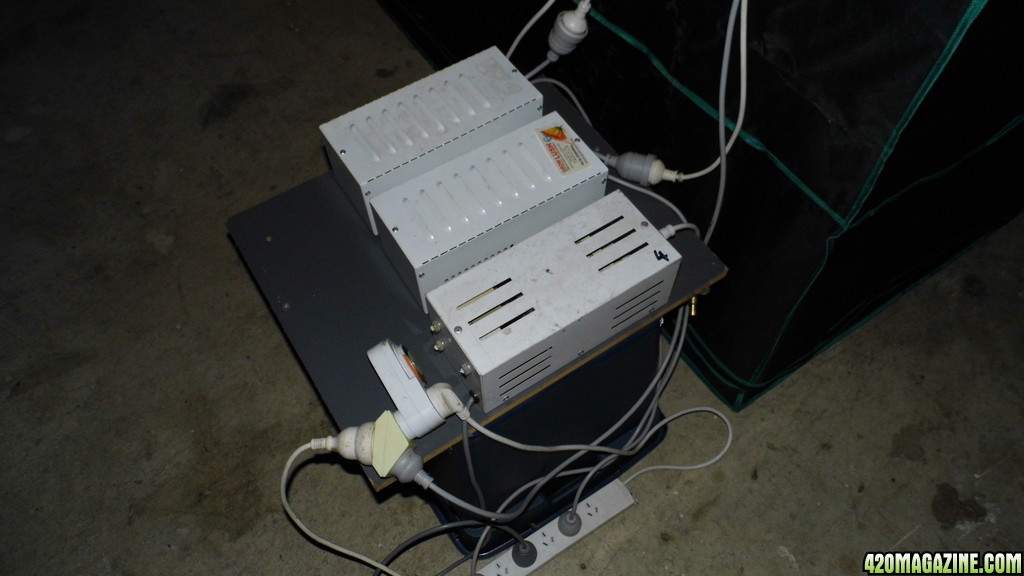
intake fan-
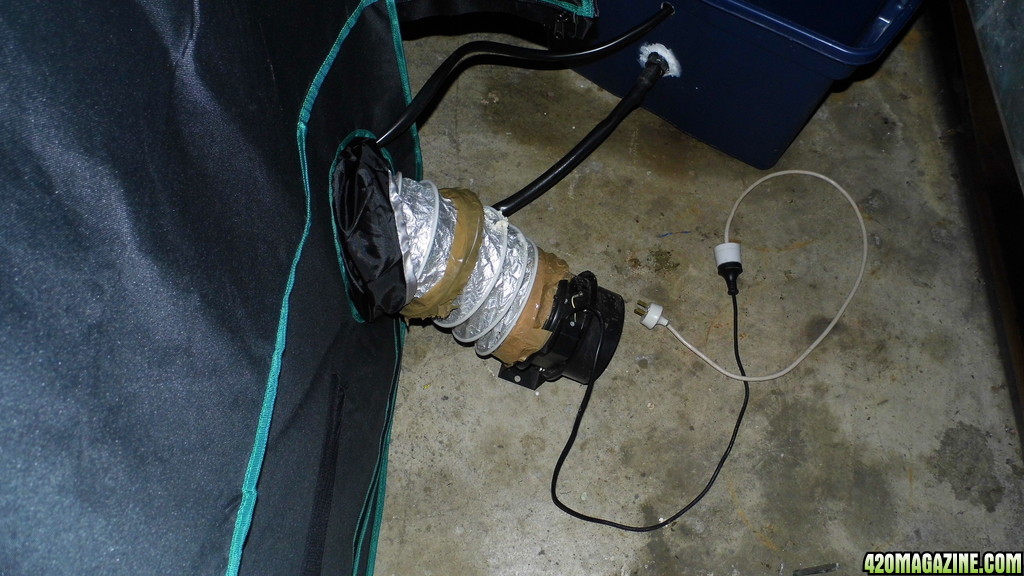
beans put to bed just yesterday(cindies not shown)-
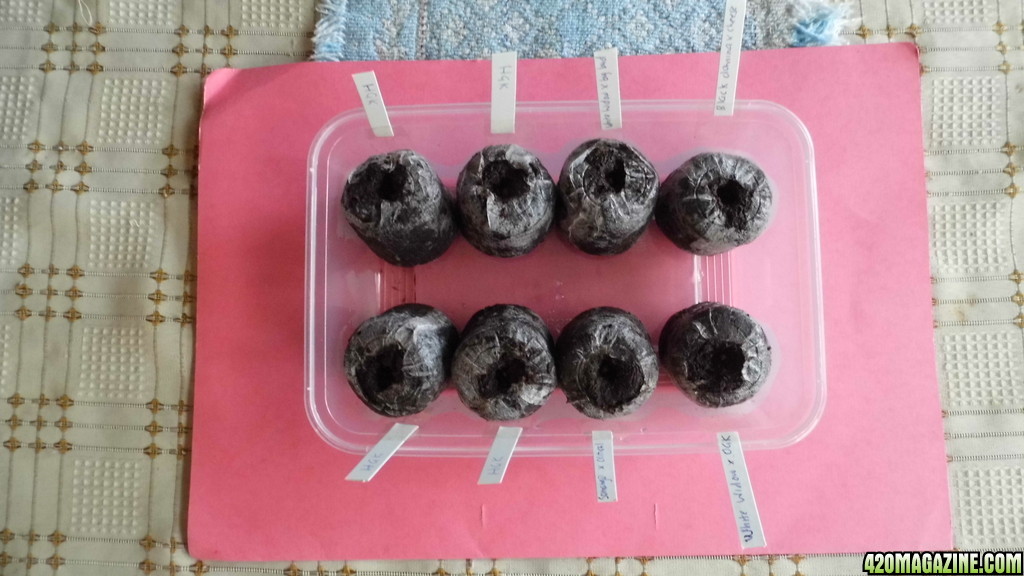
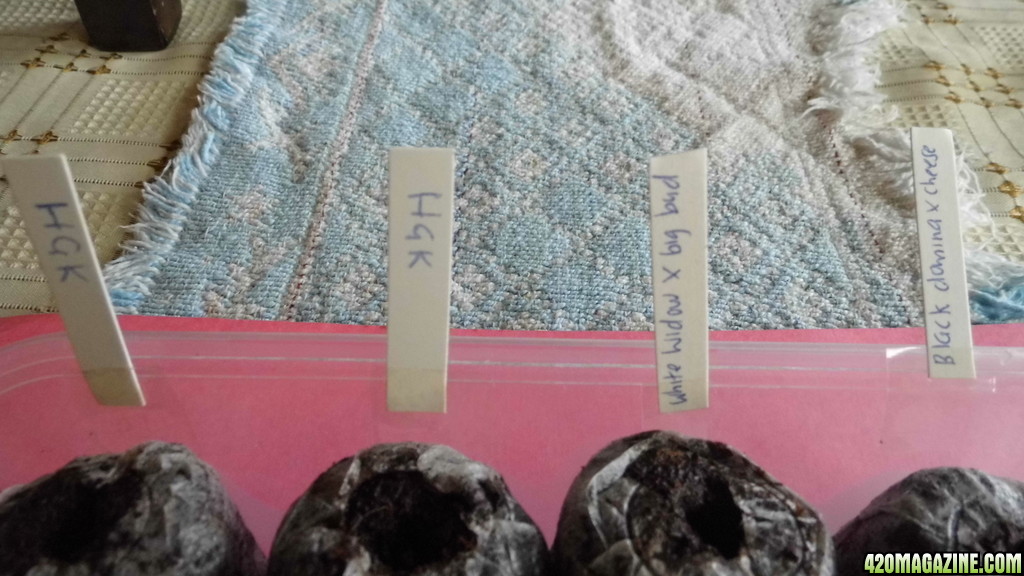
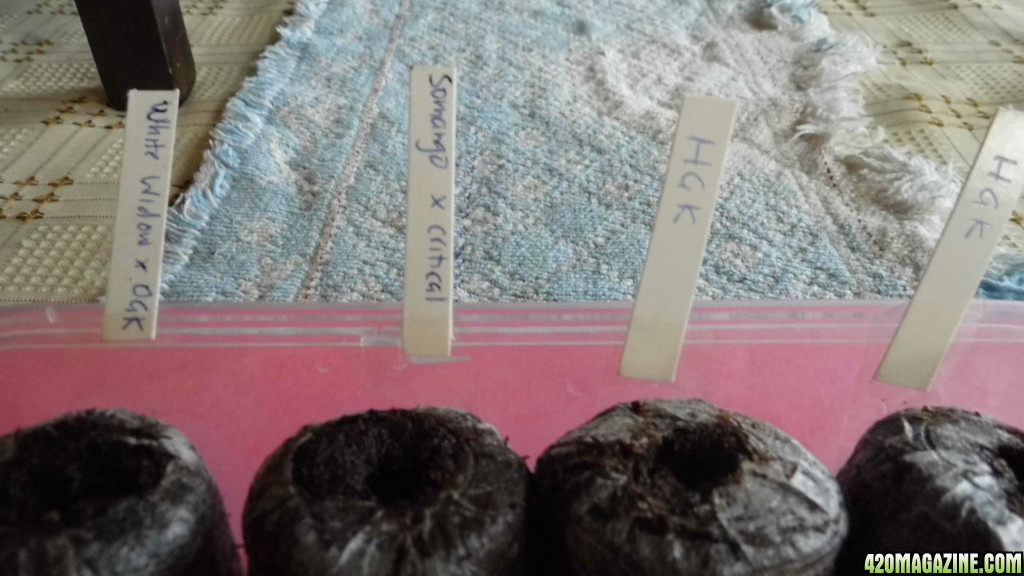
so! almost setup for the next grow! will be a few days before they are all in place but i just wanted to get this journal on the road.. or atleast aimed in that direction!
will be a few days before they are all in place but i just wanted to get this journal on the road.. or atleast aimed in that direction!
peace good folks!!
folks!! 


at this stage i am starting with this, a prelude to my next and current grow..
this will be V2 of this recirculating top feed hydroponic system proper, i have moved from a shed grow space to a 3m(wide) x 1.5m(deep) x 2m(high) tent.
i'll be catering for the needs of:
4x HGK(Holy Grail Kush): DNA genetics
1x Somango x Critical: ??
1x Black Domina x Cheese: ??
1x White widow x OG Kush: ??
1x Big Bud x White widow: x-line- female seeds
2x cinderella 99 hybrids: x-line- female seeds
thats the plan anyway ;] whether they will all prove to be fems only time will tell, i have others on standby if need be But this is what im going with at present- all except the HGK & cindies are freebies so i wanted to use them up first. i will go with Critical mass, blue dream and THC bomb in my next grow. i'll be aiming to take these little ladies to their limit in terms of yield and quality.. but as always- we'll see ;]
the equipment is much the same as my last grow.. magnetic 600W ballasts x3- 600W HPS bulbs, prima klima Cent fan and carbon filter.. same hydro setup as my last grow.. going with flairform nutrients again.. the only thing that is different really is the tent, the configuration of my hydro pots(not much different just inline as opposed to staggered due to space restrictions) and introducing a growth promotant using gibberellic acid and triancontanol- introducing both in a formulation to the reservoir every res change(once per week), i will also be experimenting with an additional growth hormone via foliar spray to only 2 of the 4 HGK plants- 2 weeks before flip to flower and 4 weeks before harvest, i will not name this hormone at this stage but will name it at the end if i see results- sorry to be so secretive! LOL
i'll be going with a GLR light cycle this time, LST as i did in my last grow and decline light times by 30 mins each week of flower.
pics to date:
tent-
with pots set up-
and with lights-
fan and filter-
intake vent for intake fan, feedline from res and return line back to res-
nutes etc-
res linked up-
ballasts set up-
intake fan-
beans put to bed just yesterday(cindies not shown)-
so! almost setup for the next grow!
 will be a few days before they are all in place but i just wanted to get this journal on the road.. or atleast aimed in that direction!
will be a few days before they are all in place but i just wanted to get this journal on the road.. or atleast aimed in that direction!peace good
 folks!!
folks!! 





 and glad to have ya along for the ride bro! i'll be slow to start with this one as the magick beans are JUST sprouting... can hardly wait
and glad to have ya along for the ride bro! i'll be slow to start with this one as the magick beans are JUST sprouting... can hardly wait 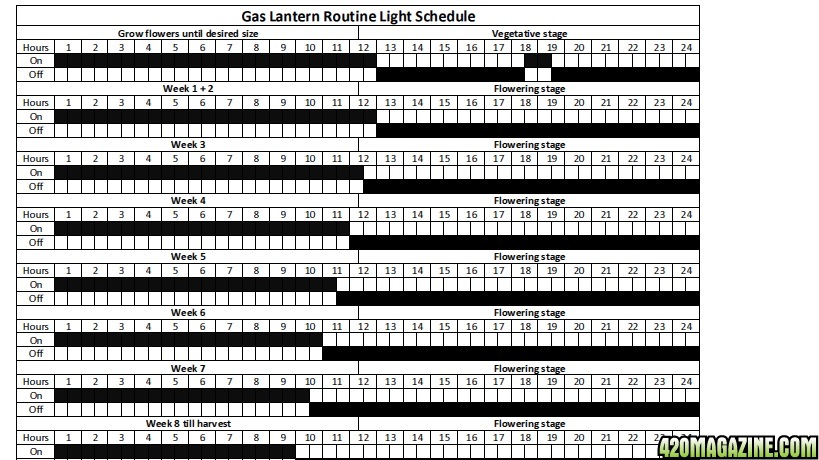









 Im sure now LST will be a part my grow in one form or another.
Im sure now LST will be a part my grow in one form or another.